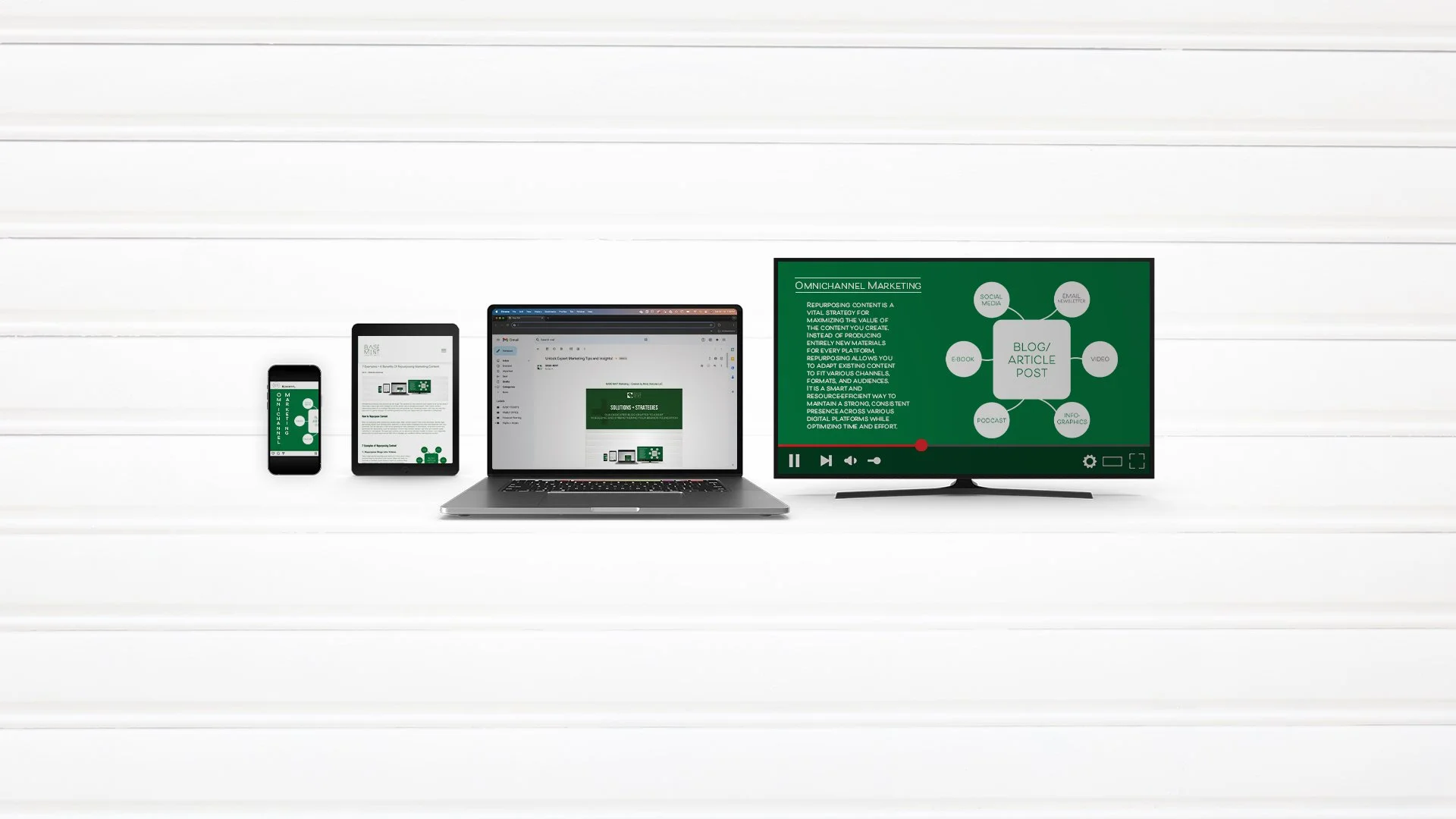7 Examples + 6 Benefits of Repurposing Marketing Content
Constantly producing new content can be tough. The demand for new material never seems to let up. But what if there was a way to get more mileage out of the content you’ve already produced? That’s where content repurposing steps in, a strategy that saves time and expands your marketing impact. Let’s dive into why this approach is a game-changer for marketing teams and how your department can implement it effectively.
How to Repurpose Content
Start by assessing what content you already have. Older content doesn’t have to be discarded. Identify high-performing pieces such as blog posts, webinars, or social media campaigns that have resonated well with your audience. You can also give it new life by updating its stats, examples, or information. Long-form content are goldmines for repurposing. Look for evergreen content that remains relevant over time and could be easily refreshed or reimagined. This approach enables you to repurpose valuable insights in smaller, more digestible pieces, and is a quick way to boost SEO and re-engage your audience without starting from scratch.
7 Examples of Repurposing Content
1. Repurpose Blogs into Videos
Take a high-performing blog post and turn it into a short video, summarizing the key points with visuals. Share the video on YouTube or another social media to reach an audience that prefers visual content. This opens up new engagement opportunities for people who may not have time to read an entire post.
2. Repurpose Webinars into Blogs
After hosting a webinar, repurpose the discussion points into a detailed blog post or series of posts, highlighting key takeaways for those who couldn’t attend. From there, repurpose your blog post into summarized videos and social media posts.
3. Repurpose Data Reports into Infographics
People love visual content because it’s easy to digest. Transform a data-heavy report or case study into an infographic, making the insights more digestible and shareable on platforms like social media, webpages, blogs, and presentations. Making the information more accessible and shareable.
4. Repurpose Interviews or Blogs into Podcasts
If you’ve conducted interviews or created a Q&A blog, repurpose the content into a podcast episode, allowing listeners to engage with the material in a new way.
5. Repurpose Long Form Content into Social Media Posts
Break down sections of long form content such as blog posts, eBooks, webinars, and case studies into a series of social media updates. Pull key quotes, stats, or tips to create bite-sized content. Use different formats like images, carousels, or short videos to increase engagement across platforms.
Omnichannel Marketing
Repurposing content is a vital strategy for maximizing the value of the content you create. Instead of producing entirely new materials for every platform, repurposing allows you to adapt existing content to fit various channels, formats, and audiences. It is a smart and resource-efficient way to maintain a strong, consistent presence across various digital platforms while optimizing time and effort.
6. Repurpose Newsletters to Email Series’
Turn one in-depth newsletter into a multi-part email series, breaking the content down into smaller, more focused sections that are sent out over time to engage subscribers with ongoing value.
7. Repurpose User Generated Content into Multiple Channels
You can repurpose user-generated content, such as customer reviews or social media posts, into testimonials for your website, share them as social proof in email campaigns, or feature them in ads to boost authenticity and engagement.
6 Benfits of Repurposing Content
Repurposing content is taking existing materials and reformatting or refreshing them for new purposes and platforms. This strategy has several key benefits:
Increased Efficiency
Creating content from scratch is time-consuming. Repurposing enables you to save time by transforming one piece of content, such as a blog post, into multiple formats like videos, infographics, podcasts, or social media posts.
Extended Reach
Different platforms attract different audiences. By repurposing content for various formats, you can reach a broader audience, ensuring your message resonates with users who prefer different types of media.
Consistency in Messaging
Repurposing content helps maintain a consistent message across channels, reinforcing your brand’s core ideas. This builds trust and familiarity with your audience.
Better ROI
Maximizing the use of content reduces the cost of creation. Instead of allocating resources to develop new content constantly, you can refine and expand on existing materials, making the most of your investment.
Catering to Different Learning Styles
People consume information in different ways. Some prefer reading, others like watching videos, listening to podcasts, or engaging with interactive content. Repurposing allows you to present the same valuable information in formats that cater to a variety of learning preferences, increasing engagement and comprehension.
SEO and Visibility Boost
Repurposing content can help improve your SEO efforts. By updating or republishing older content in new formats, you give it fresh life, increasing visibility in search engines and boosting overall engagement.
Repurposing content is more than just a time-saver; it’s a strategy that can significantly expand your reach and reinforce your message across different channels. For a marketing department aiming to improve efficiency and engagement, learning to repurpose effectively can free up time, optimize resources, and help you focus on crafting impactful new ideas.
By getting creative with your existing materials, your marketing efforts can continue to grow and resonate without requiring the constant creation of brand-new content.
If you’d like to tweak the post further or tailor it to a specific marketing audience, please schedule a time to connect with us.



